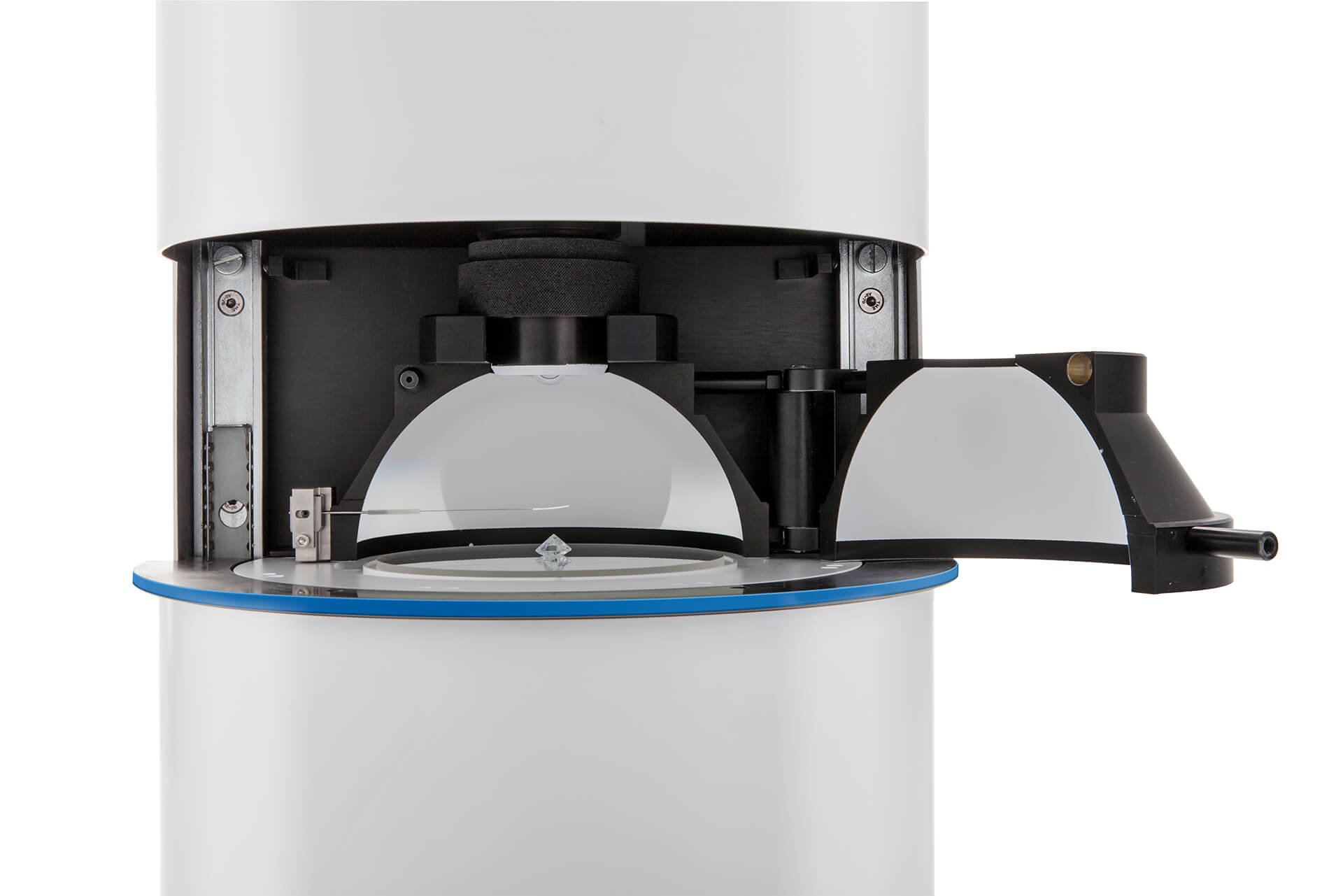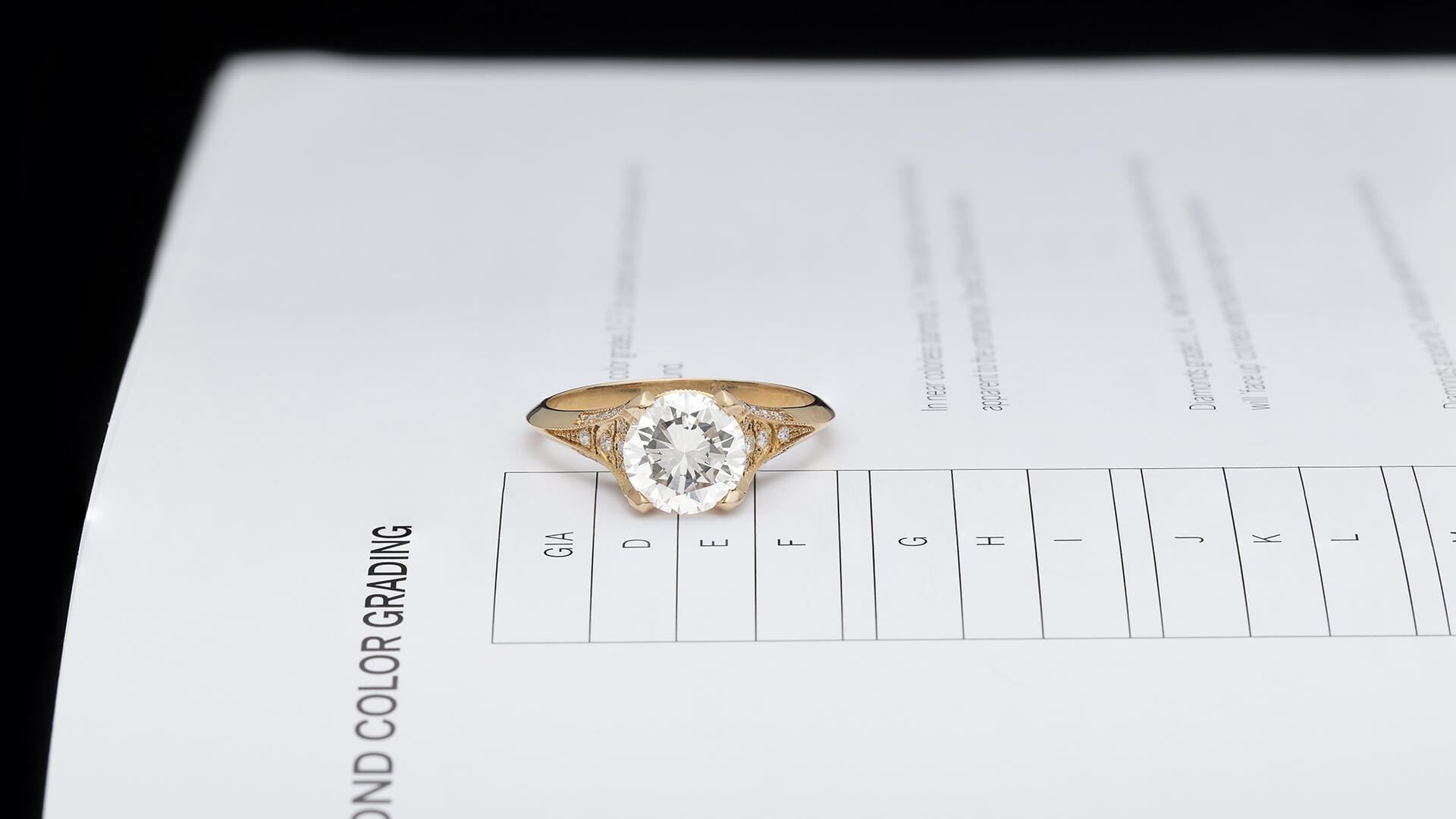DIAMOND VERIFICATION AND TREATMENT DETECTION
Microscope, polarizing microscope
The microscope is one of the most important tools in diamond testing. In fact, without any further testing, a close look at a stone under a microscope can give an experienced analyst a lot of information. It is vital to use the very highest quality microscopes with options of high magnification and with the best illuminations possible. In order to create an even higher performing analytical tool from a microscope, one can add polarizing filters. With the help of such filters, an analyst can distinguish type I and type II/low nitrogen type I diamonds, and in many cases imitations and synthetic diamonds from natural diamonds.
Fluorescent lamp
With a long wave (365 nm) and short wave (254 nm) UV lamp, the fluorescence and phosphorescence of diamonds is observed. The vast majority of diamonds show some luminescence at 365 nm, even if often only very weak, and at 254 nm, luminescence is less obvious. The information found by using a standard UV lamp can be particularly useful to distinguish natural and synthetic diamonds.
Infrared (FTIR – Fourier Transform InfraRed) Spectrometer
This instrument is one of the most common modern pieces of laboratory equipment; it is used to measure how infrared radiation is absorbed/transmitted by a diamond. Infrared spectroscopy can be used for:
– Identification of a material, hence distinguishing diamond from all its imitations.
– Detection and calculation of nitrogen and boron in the diamond structure.
– Detection of infrared-active hydrogen defects.
– Detection of certain defects caused by irradiation and irradiation followed by annealing.
– Help in detecting HPHT treatment of type I diamonds.
– Help in distinguishing natural from synthetic diamond.
Photoluminescence/Raman spectrometer
This instrument covers two techniques at the same time: Raman spectroscopy and photoluminescence spectroscopy. Raman spectroscopy is a vibrational technique, based on the vibrations of atoms and molecules. With this method, the gemologist can detect how vibrating molecules and atoms modify the wavelength of monochromatic light. A Raman spectrum is most commonly used to identify gems, since the resulting peaks are characteristic for the different gem species; therefore, it is a fast, easy method to distinguish diamond from diamond imitations.
On a Raman spectrometer, luminescence can be measured at the same time as Raman scattering, since it is excited by the intense laser beam. This is what is known as photoluminescence (PL) spectroscopy, a highly sensitive technique to detect defects in diamonds. The vast majority of defects that can be identified by absorption spectroscopy can also be detected by PL spectroscopy, but with much higher sensitivity; moreover, a very large quantity of PL features can be detected that cannot be seen in absorption. PL spectroscopy can be used for a large range of applications, including synthetic diamond and HPHT treatment detection.

